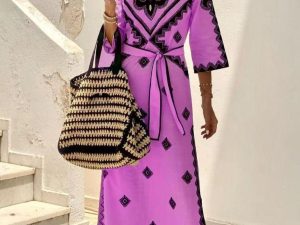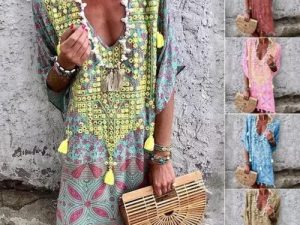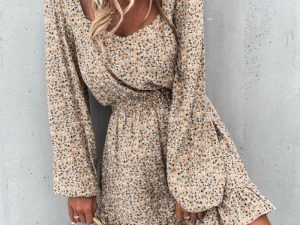Free shipping on all orders above $100
Dresses for Theater Acting: Best Sources and Tips

Table of Contents
Shop Boho Dresses
When it comes to theater acting, the right dress can make all the difference. At Boho 70, we’ve got a wide selection of clothing that ensures every actor steps onto the stage feeling confident and looking the part. Whether you’re playing a regal queen or a humble villager, our collection offers something for every role.
The keyword “dresses for theater acting” is more than just a phrase; it’s what we specialize in. Our dresses are designed with the actor in mind, focusing on comfort, durability, and authenticity. So, if you’re prepping for your next big performance, let Boho 70 help you find the perfect costume to bring your character to life.
Key Takeaways
- Importance of Costumes: Costumes are crucial in theater for character definition, setting time periods, conveying mood and theme, symbolizing traits, and showing transformations.
- Types of Dresses: Theater acting requires diverse dresses such as period dresses, contemporary dresses, and fantasy/sci-fi dresses to match different roles and settings.
- Material Considerations: Choosing the right materials ensures comfort, mobility, durability, and ease of maintenance, essential for repeated performances and dynamic roles.
- Sources for Dresses: Options like custom-made and rental dresses provide flexibility to find costumes that fit specific roles, historical accuracy, and budget constraints.
- Tips for Choosing a Dress: Align costumes with the character’s personality, era, and social status, and consider stage visibility and lighting to enhance overall performance.
Importance Of Costumes In Theater
Costumes are vital in theater as they help define characters, set the time period, and convey the production’s tone and style. Costumes allow actors to inhabit their roles fully, creating a believable performance.
- Character Definition
Costumes help define and distinguish characters. For example, a wealthy character might wear extravagant clothing, whereas a servant would wear simpler attire. These visual cues help the audience understand the characters’ roles and relationships. - Time Period and Setting
Costumes situate the play in a specific time and place. For instance, Renaissance attire instantly informs the audience of a Shakespearean setting. Accurate costumes make the production more immersive. - Mood and Theme
Costumes contribute to the overall tone and theme. Dark, muted clothing might indicate a somber or serious play, while bright, whimsical costumes suggest a comic or lighthearted production. - Symbolism
Costumes can symbolize various themes or character traits. A character dressed in all white might symbolize purity, while one in red could represent passion or danger. These choices enhance the storytelling. - Character Transformation
Costume changes often signify a character’s transformation. For instance, a character moving from rags to riches would change wardrobes. This visual transformation reinforces the narrative arc.
Types Of Dresses For Theater Acting
Choosing the right dress for theater acting is crucial to bring characters to life and accurately portray the story. Different dress types can set the right tone for the audience.
Period Dresses
Period dresses reflect specific historical eras and help establish the setting. They are richly detailed to reflect the time period. For example:
- Victorian Gowns: These dresses have high necklines, long sleeves, and full skirts with multiple layers.
- Renaissance Dresses: Featuring corsets, elaborate embroidery, and puffed sleeves.
- 1920s Flapper Dresses: Known for their loose fit, fringes, and beaded details.
Contemporary Dresses
Contemporary dresses are versatile and align with modern-day settings. They are often simpler but vary widely depending on the character’s role and personality. Examples include:
- Office Dresses: Tailored, sleek dresses suitable for professional characters.
- Casual Dresses: Everyday wear such as sundresses or maxi dresses.
- Evening Gowns: Elegant, formal wear for high-society characters.
Fantasy And Sci-Fi Dresses
Fantasy and sci-fi dresses often require unique, imaginative designs. These costumes support the creation of otherworldly atmospheres. Examples include:
- Elven Gowns: Often flowing, with ethereal elements like lace and shimmering fabrics.
- Space Suits: Futuristic designs incorporating metallic fabrics and armor-like details.
- Magical Robes: Encompass mystical elements and often have dramatic features like long sleeves and hoods.
Find a huge selection of chic clothing at our online store, Boho 70. Explore diverse options to perfectly match your theater needs. Visit Boho 70 now to discover unique, high-quality dresses.
Material And Fabric Considerations
Choosing the right material and fabric for theater acting dresses is crucial. Each choice impacts the actor’s comfort, performance, and the costume’s longevity.
Comfort And Mobility
Actors need to move freely on stage, requiring materials that offer flexibility and breathability. Natural fabrics like cotton and linen allow for better airflow, reducing discomfort during long performances. Stretch fabrics like spandex can provide the necessary range of motion for dynamic roles. For instance, costumes for dance-heavy performances often use a blend of flexible materials to prevent movement restrictions. Light, breathable fabrics also prevent overheating under stage lights.
Durability And Maintenance
Theater costumes face wear and tear during performances, making durability a key consideration. Fabrics like polyester and wool blends offer resilience and can withstand repeated use without significant degradation. For example, costumes for long-running shows benefit from materials that can endure frequent laundering. Easy-to-clean fabrics ensure that costumes maintain their appearance without excessive effort. Sturdy materials not only extend the life of the costume but also maintain its aesthetic quality.
Discover a wide selection of chic, theater-appropriate clothing at our online store, Boho 70. Our range prioritizes comfort, durability, and authenticity, ensuring that you find the perfect pieces for your stage needs. Visit us today to browse our collection and elevate your theatrical wardrobe.
Popular Sources For Theater Dresses
Finding the right theater dress is essential. The fit, style, and authenticity can make or break a performance. Here are some popular sources for theater dresses:
Custom-Made Dresses
Custom-made dresses offer precision. Actors can get designs tailored to specific roles, ensuring accuracy and comfort. For example, ‘Sightly Tailors’ specializes in period costumes, offering pieces that reflect the historical era accurately. ‘Dramatic Designs’ creates fantasy costumes like Elven gowns, complete with intricate details. Custom-made options can be pricier, but the results justify the investment through enhanced performance quality.
Rental Options
Rental options provide flexibility. For short-term needs, renting is cost-effective. ‘Stage and Screen Rentals’ offers a diverse array of contemporary outfits like office wear and evening gowns. ‘Theater Wardrobe’ provides access to a vast library of costumes, from Victorian gowns to space suits, perfect for quick changes between performances. Rentals ensure high-quality costumes without the long-term cost.
Tips For Choosing The Right Dress
Choosing the right dress for theater acting is crucial. These tips ensure your costume aligns with your character and enhances your performance.
Character Alignment
Costumes should reflect a character’s personality and era. For instance, a Victorian dress fits a historical drama. So, consider these factors:
- Research the Role: Understand your character’s background. If portraying royalty, a regal gown is fitting.
- Historical Accuracy: Choose styles and fabrics that match the period. For an 18th-century play, opt for materials like silk and designs featuring corsets.
- Character’s Status: Reflect social status through costume details. Use fine embroidery and rich fabrics for affluent characters, while simpler materials work for commoners.
Stage Visibility And Lighting
Stage conditions affect costume choices. Bright stage lights and visibility matter:
- Fabric Reflectivity: Ensure the fabric doesn’t reflect stage lights harshly. Matte materials prevent glare and improve visibility.
- Color Selection: Colors need to pop under stage lighting. Bright hues like reds and blues stand out, while dark colors may blend with the background.
- Detail and Texture: Ensure details and textures are visible from a distance. Large patterns and textures stand out better under lights.
Conclusion
Choosing the right dress for theater acting is more than just selecting an outfit. It’s about enhancing the performance and bringing characters to life. Whether you opt for custom-made designs or rental options, the key is to ensure that the costume aligns with the character and fits the stage conditions.
By focusing on historical accuracy, character alignment, and stage visibility, you can make sure your costume not only looks great but also supports your role effectively. Remember to consider fabric reflectivity and color selection to ensure your dress stands out under the stage lights.
Investing time and thought into your theater dress can make a significant difference in your performance, helping you captivate the audience and truly embody your character.









